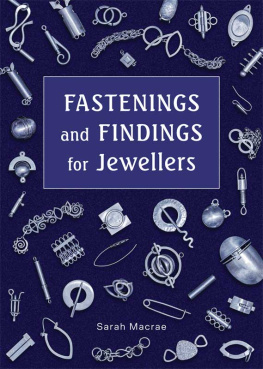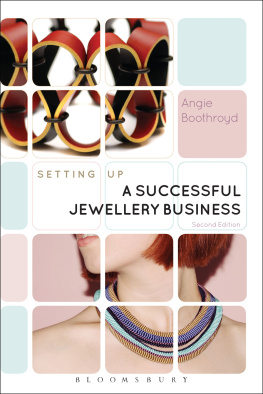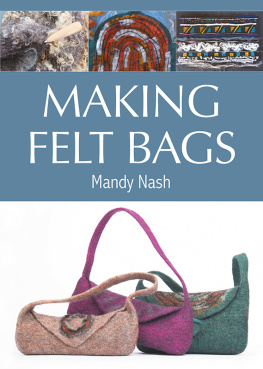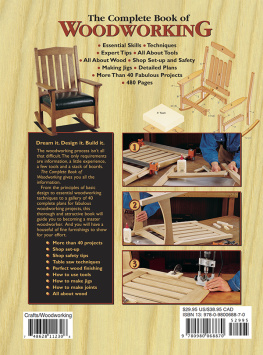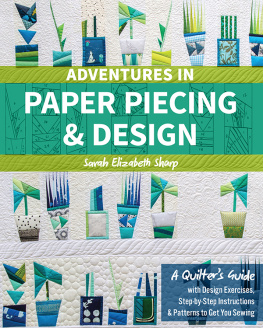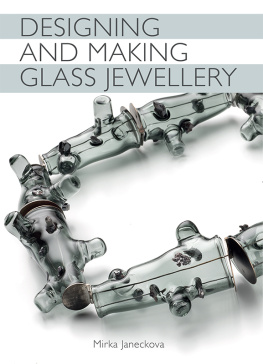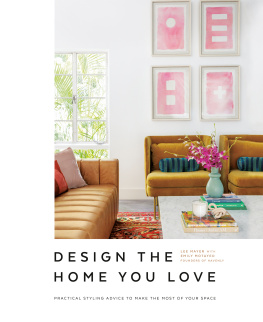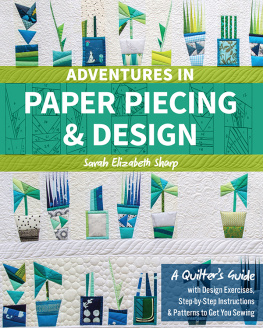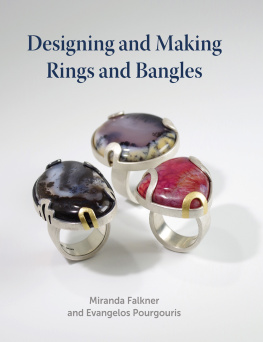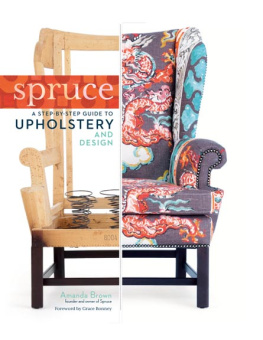Page List


Souk Bridge, penannular brooch. Silver and polypropylene, 145mm 20mm. (Photo: Paul Hartley)

First published in 2022 by
The Crowood Press Ltd
Ramsbury, Marlborough
Wiltshire SN8 2HR
www.crowood.com
This e-book first published in 2022
Sarah Macrae 2022
All rights reserved. This e-book is copyright material and must not be copied, reproduced, transferred, distributed, leased, licensed or publicly performed or used in any way except as specifically permitted in writing by the publishers, as allowed under the terms and conditions under which it was purchased or as strictly permitted by applicable copyright law. Any unauthorised distribution or use of this text may be a direct infringement of the authors and publishers rights, and those responsible may be liable in law accordingly.
British Library Cataloguing-in-Publication Data
A catalogue record for this book is available from the British Library.
ISBN 978 0 7198 4123 1
Cover design: Sergey Tsvetkov
Cover photo: Johnny J. Gallagher
Dedication
With thanks to my family for their support and encouragement, to the jewellers who lent me images of their work, to the many students who road tested the instructions, giving me very useful feedback, and to my editor for her patience.
INTRODUCTION
This book is intended to explain some of the many ways you can make the functional element of a piece of jewellery, the fastenings and findings. Whether it is a hidden part of the design or a stand-out feature, the functional part of the piece should be appropriate to the concept of the piece, in keeping with the overall design. Ideally it should be a graceful integral part, not difficult for the wearer to use, and safe and secure for the piece itself. Although handmade findings are an extra commitment in time in making a piece of jewellery, they do confer a greater sense of quality to the design. Seeing a beautiful and thoughtfully designed handmade piece then fastened with a mass-produced lobster clasp in my eyes at least sadly devalues it. Many of the fastenings are challenging to make and require considerable accuracy but that is part of the pleasure too. Where I have given measurements for particular instructions they relate to my samples to give you an idea of the relationships and proportions of a catch, but once you have understood the way a fitting works (and sometimes you really just have to make one to understand it), you can vary it infinitely to suit your design. In this small book it is impossible to cover everything so I have concentrated on my way of doing things. Sometimes it seems there are as many ways of working as there are jewellers, all with their own preferences and methods learnt through experience of doing something in a particular way. All I can do is offer you my way and from there you should try things out, see what works for you and develop your own way. Sometimes there are sound reasons, for which explanations will be given, for some methods. However, the key to problem solving the making of a particular design is to think your way through it, endeavouring to anticipate what will happen and where things might go wrong. Particularly when moving into making your own interpretations of some of the different catches you might have to make it several times to iron out any problems, but dont let that deter you.
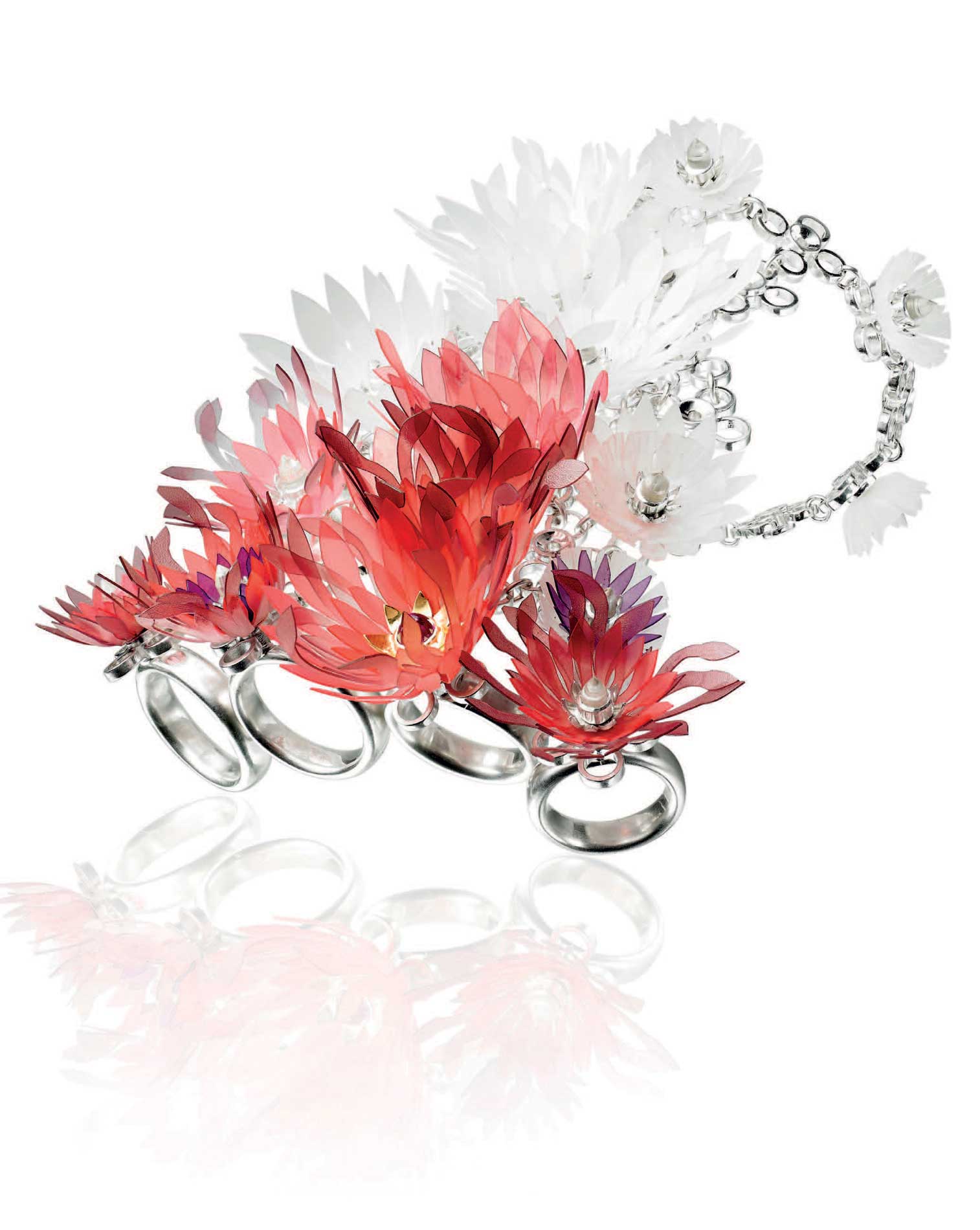
Seed Bed, haathphool or handflower bracelet and four rings. Sarah Macrae, 2015. Silver, 18ct gold, polypropylene, rock crystal and ruby, 90mm 100mm 50mm. (Photo: Paul Hartley)
Research historical jewellery for the amazing variety of different catches and findings and seeing the ingenious ways craftspeople through the ages have adapted and varied the functional elements allowing the extraordinary variety of designs produced to be worn on the body. Many museums have now digitized their collections and the pieces are often photographed from all directions, so it is easier to see the backs and understand how the functional mechanisms work.
This book will cover the initial setting up of your working space, health and safety, and basic working processes, followed by detailed instructions for a range of different catches and findings.
CHAPTER ONE
WORKING WITH PRECIOUS METAL
Making jewellery, like any fine motor skill, requires practice, and lots of it, so do not expect immediate success. You need to be able to see well and have good manual dexterity but there are many tools to help you, and many ways of improving your close-up vision. You need to organize the space in which you are going to work to enable you to work accurately and comfortably. If you are going to be sitting still for long lengths of time a comfortable chair is really important. I use a medical operators chair, which I can adjust up and down; the backrest adjusts too. The workbench should be high enough that you can sit with your back straight and when you rest your elbow on the bench your elbow should be level with your shoulder. You can raise your bench peg to this level if the bench you are working on is lower. You need to work in good light, either natural or a bright spotlight, for accurate sawing and filing. Your soldering area needs to be darker so you can see the colour of the metal clearly. Tools need to be organized so that you can easily reach anything you need, and so you know where everything is (Im still working on that one!).
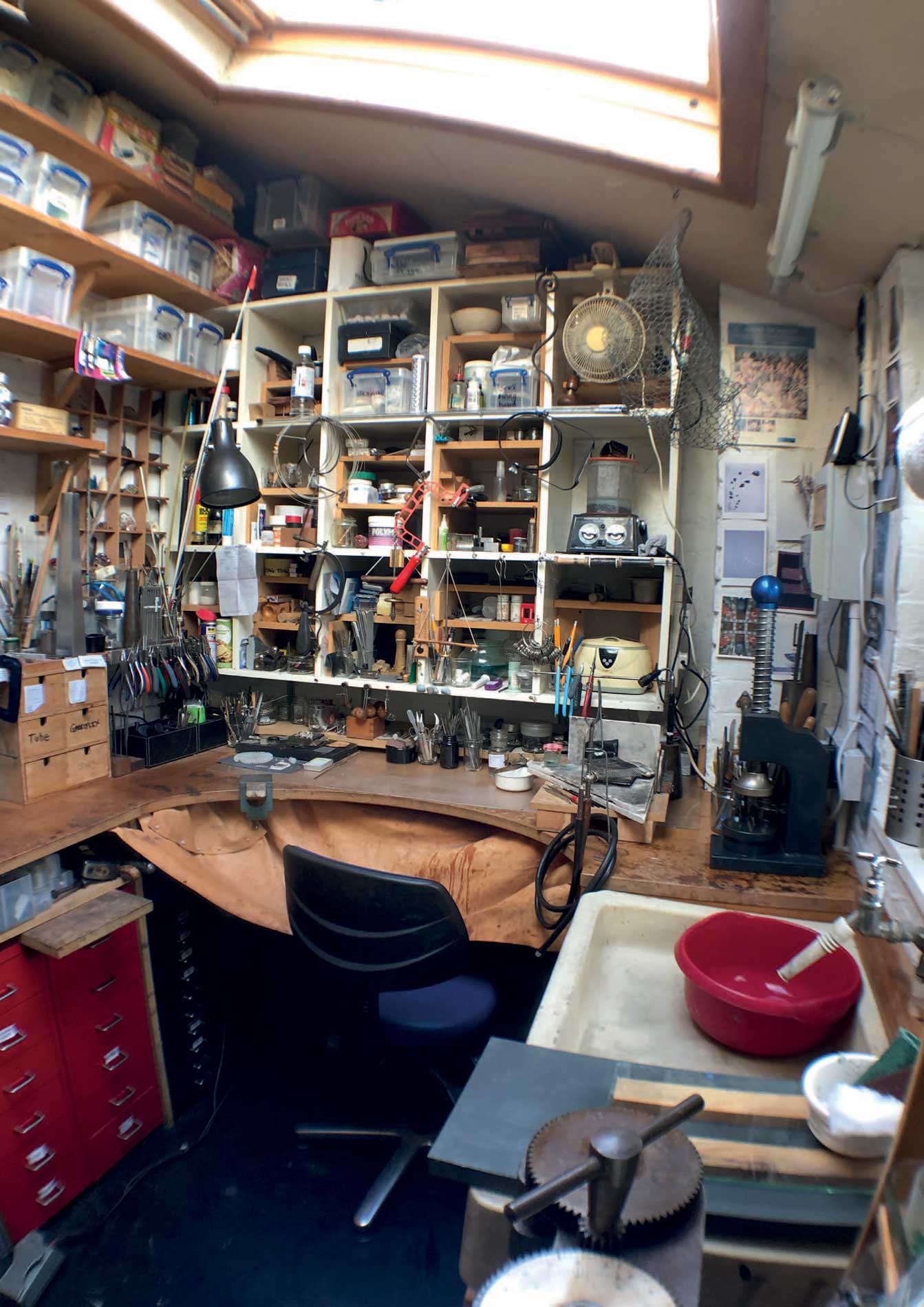
My workshop.
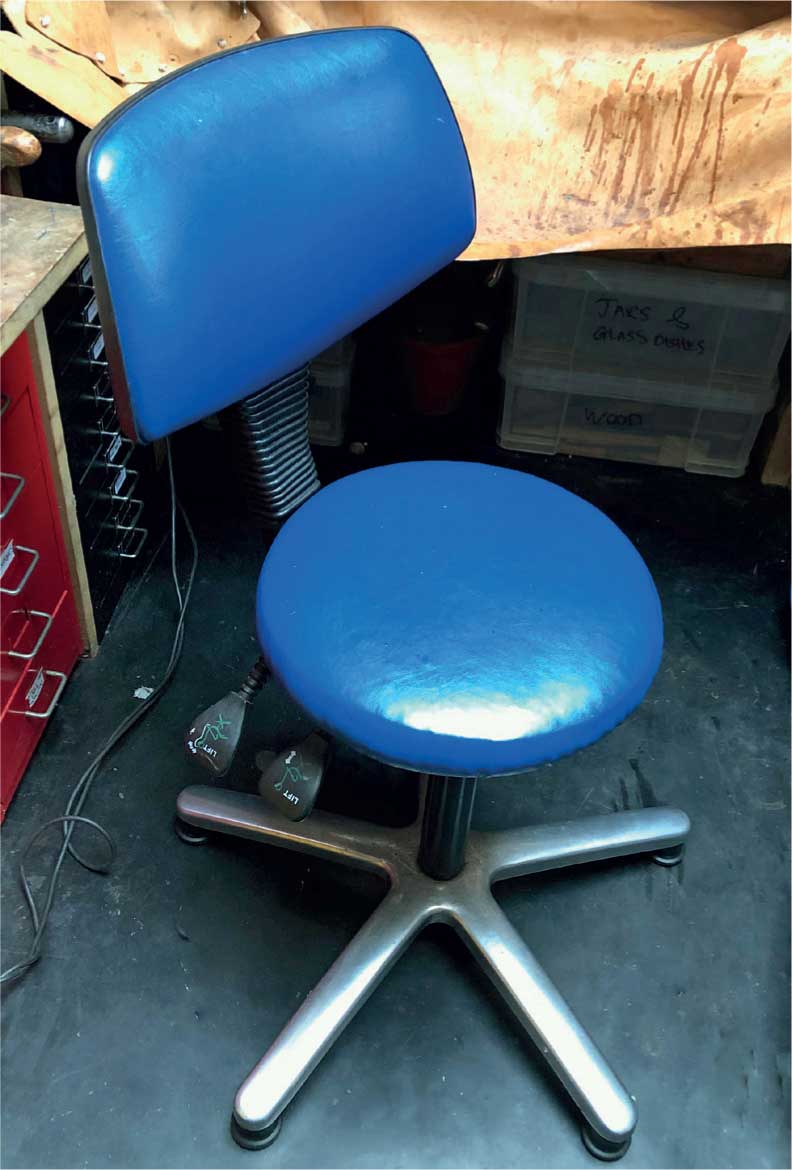
A comfortable chair is very important when you are sitting for long periods of time. Mine is a medical operators chair.
HEALTH AND SAFETY
When setting up your workshop you need to consider your own safety and that of anyone else who may come into the space. There is lots of information online about health and safety policy and it is worth reading it before setting up your own workshop, but much of it is common sense. Health and safety is mainly about imagining worst-case scenarios and how to mitigate risk to yourself and others and so it will depend on your circumstances and workshop situation. Think about what you are wearing, tie your hair back if it is long, and do not wear trailing scarves or sleeves that can catch in your soldering flame or machinery. Wear closed shoes so if you drop something hot or heavy you will not injure yourself and wear a sturdy cotton or leather apron. Do not wear lots of jewellery while you are working, as rings and bangles can catch in machinery. Keep the floor space clear so you can move around your workshop without risking tripping over anything.
WORKING SPACE

